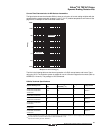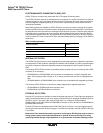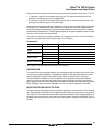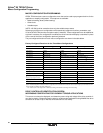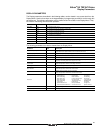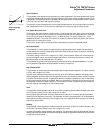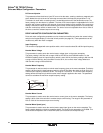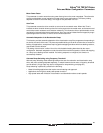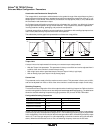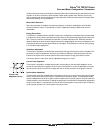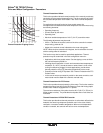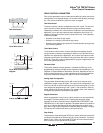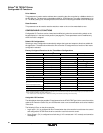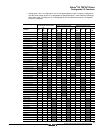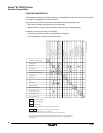
Altivar
®
58 TRX AC Drives
Drive and Motor Configuration Parameters
45
09/2003
© 2000–2003 Schneider Electric All Rights Reserved
Motor Power Factor
This parameter is used to enter the motor power factor given on the motor nameplate. This allows the
drive to provide better current regulation for better motor torque performance. The factory setting
depends on the drive controller rating. The range for this parameter is 0.5 to 1.
Auto Tune
This parameter causes the drive controller to auto tune the connected motor. When Auto Tune is
initiated, the drive controller allows a pulse of current to pass to the connected motor, and measures and
stores motor stator resistance and conductor resistance. This allows the drive to provide better current
regulation for improved motor torque performance. Auto Tune can be initiated from the keypad, by a logic
input assigned to this function, or over a serial communication link.
Automatic Adaptation of the Deceleration Ramp
This function provides automatic adaptation of the deceleration ramp if the programmed ramp setting is
too low for the inertia of the load. This prevents possible faulting of the drive controller due to excessive
braking. All applications, except those requiring precise stopping and those which use braking resistors,
may benefit from this function.
The setting of this function is either Yes or No, with the default setting determined by the macro-
configuration. Automatic adaptation must be cancelled if the machine has position control with stopping
on a ramp and a braking resistor installed. If a braking sequence is configured, this function is
automatically disabled.
Alternate Ramp Switching using Frequency Threshold
Alternate ramp switching allows switching between two sets of acceleration and deceleration ramp
times, with each set being adjusted separately. To switch between the two sets, a frequency threshold
can be defined. (A logic input may also be configured for ramp switching; see page 53.)
Ramp switching is particularly suited for the following:
• Material handling applications that require smooth starting and approach.
• Applications involving fast, steady-state speed correction.
• High-speed lathes with limitation of acceleration and deceleration above certain speeds.



